
Unlocking the treasure box
By Antje Burke
8th August 2020
Most of Namibia’s development was built on diamonds. Since 1908, when one of the richest diamond placers on earth was discovered, millions of carats of first-class gem and industrial diamonds have been mined from deposits in the far south-western corner of the country. To protect the diamond industry, the deposits have been locked away in a restricted area for more than 100 years. Except for the occasional determined researcher, only miners, mining support services and government officials have so far been allowed to visit the enigmatic Sperrgebiet – the restricted diamond area.
But the diamond resource on land is dwindling, causing the mining activities to shift ever further towards the vast resources that still remain offshore. This means that the area can finally be put to other uses. In 2008, notably 100 years since the first diamond was discovered here, the restricted area was proclaimed as the Sperrgebiet National Park (later renamed the Tsau //Khaeb National Park) and added to Namibia’s protected area network. The new national park has nonetheless remained off-limits to the public due to diamond-related security concerns.
The long-term vision for the park is to open up parts of the area for controlled tourism. The Ministry of Mines and Energy (MME) and the Ministry of Environment, Forestry and Tourism (MEFT) are currently engaged in discussions to find a balance between limiting security risks to the diamond industry and developing tourism. With the help of donor funding, largely from Germany (Kreditanstalt für Wiederaufbau), the administrative tasks, planning and building infrastructure for park management and tourism facilities are underway.
As one of the few researchers who have been privileged to visit the restricted diamond area, I am excited to introduce you to some of the treasures that have been locked away for so long. This is just a taste of what awaits the intrepid explorers who will visit the Sperrgebiet in the near future.
Diverse landscapes created by fascinating geological processes
The Sperrgebiet encompasses a stunning mosaic of scenery changing from wide open spaces to intricate rocky landscapes with isolated mountains (known as inselbergs), shifting dunes and formidable mountain ranges, connected by valleys and prehistoric dry rivers that deposited invaluable artefacts of geological times gone by. Unique features such as the Bogenfels rock arch or the Roter Kamm meteorite crater have become well-known despite the access restrictions. Yet, scattered throughout the area, there are many other eye-catching features chiselled into the rocks through eons of wind erosion, waiting to be admired and photographed by future visitors to this beautiful area.
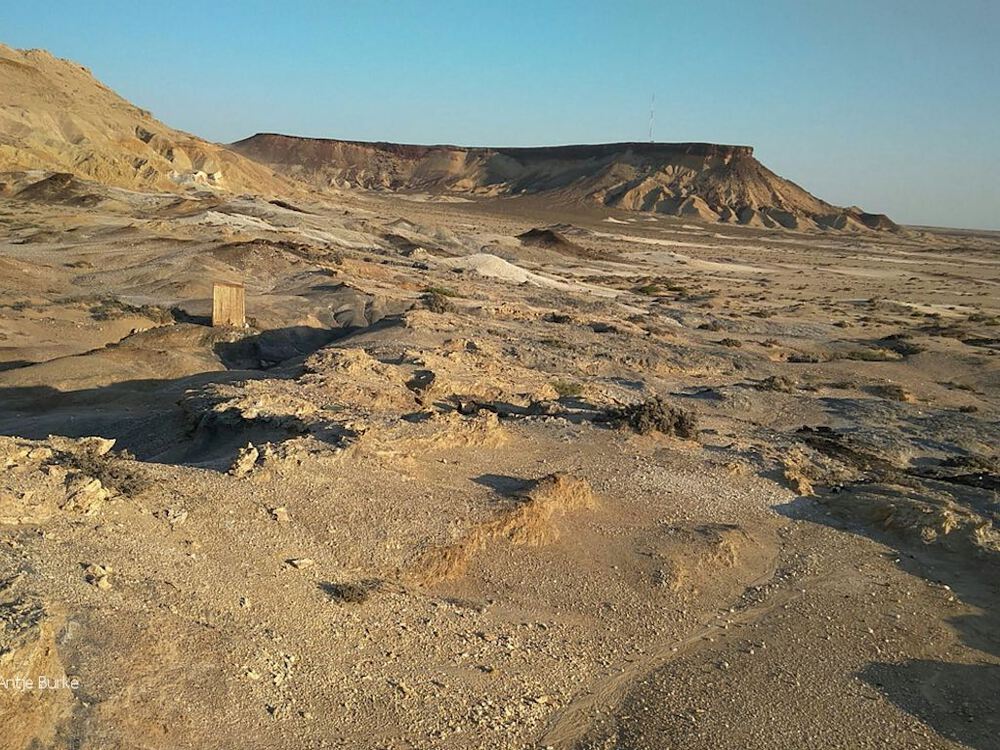
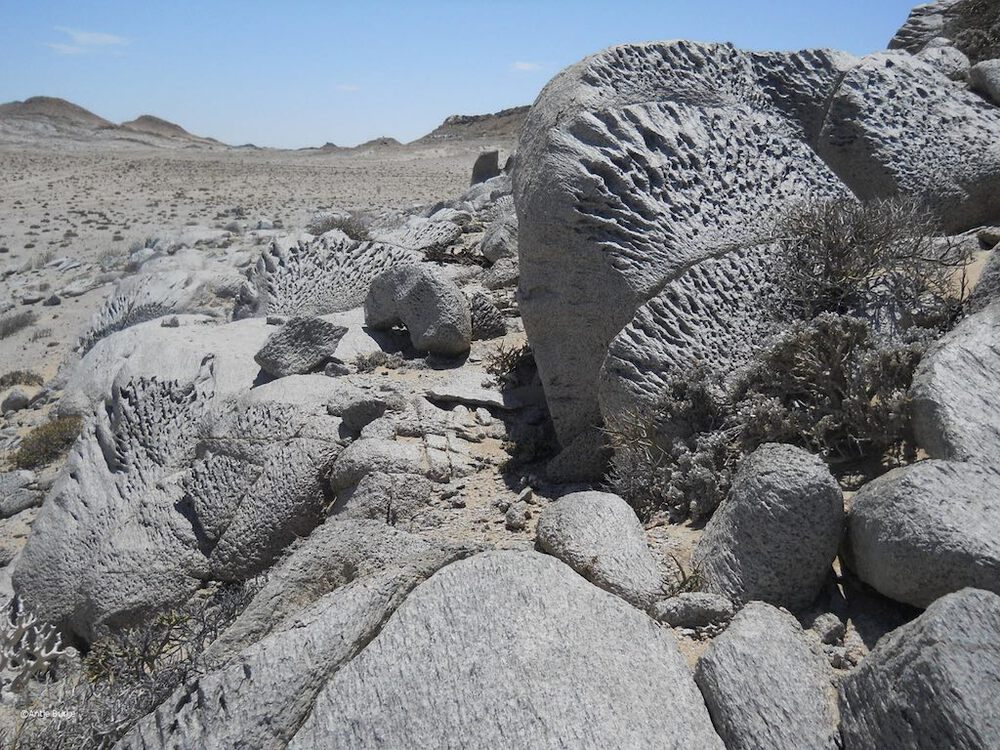
Several phases of continental movements, ocean formation, mountain building, erosion and sedimentation processes shaped the awe-inspiring landscapes of the Sperrgebiet. The results of these earth-forming processes can be admired in some of the most ancient rock formations to be found in Namibia. The oldest rock found in the Sperrgebiet was formed 1500-1200 million years ago (mya). Examples of this rock include: the meta-sedimentary rock (largely gneiss) of the Namaqua Metamorphic Complex exposed around Lüderitz and the mountains in the northern part of the park known as Kowis Mountains, Haalenberg and Tsaukaib. The Gariep Group of deformed sedimentary and volcanic rock is only slightly younger – laid down during another phase of mountain building and sedimentation processes 900-500 mya. The famous Bogenfels rock arch in the Sperrgebiet is one of the most impressive remnants from this period.
The Nama Group of limestones was the next major sediment deposit that formed within a shallow marine basin some 550-500 mya. The limestone is now exposed for all to see in the Tsaus and Swartkloof mountains in the eastern part of the park. This geological feature extends east towards the Huib Hoch-Plateau and the Fish River Canyon.
The break-up of the supercontinent Gondwana during the early Cretaceous (145-133 mya) left several witnesses of these geologically turbulent times, such as carbonatite plugs (formed from calcium-rich magma) and other intrusive rocks. Examples of these rocks can be found at Granitberg, Signalberg and Karingarab. Granitberg is an inselberg that rises high above the surrounding landscape, while Signalberg and Karingarab are much lower rocky outcrops. Subsequent erosion and the rising sea level deposited sediments that are today exposed as silcretes in only a few places, such as around Pomona. Silcretes are hard crusts composed largely of silica, which is more resistant to erosion than the surrounding rock.
A wetter period during the early Tertiary (60-45 mya) created a network of rivers draining towards the sea, many of which are rich in fossils (e.g. Blaubock and Langental). The numerous volcanic eruptions during this period created the Klinghardt phonolites and the volcanic cone of Schwarzer Berg to the east of Pomona. Phonolite is a type of volcanic rock that contains relatively large amounts of the mineral nepheline – it is commonly known as ‘clinkstone’ because of the clinking sound it makes when two pieces are struck together.
The early Tertiary also marks the beginning of the diamond history when the Orange River began transporting diamonds from Kimberlite pipes in Lesotho and the South African Highveld. Since then diamonds have continuously been transported via the Orange River into the Atlantic Ocean. Along this ‘conveyor belt’ some diamonds were left behind on terraces along the river, while others were finally dropped into the Atlantic. Parts of these marine deposits were then washed ashore. Through this process the diamond-rich material was deposited in linear beaches, valleys and localised pockets all along the Namibian coast. The concentration and size of diamonds decreased the further they were deposited from the Orange River mouth.
Unrivalled biodiversity
Almost a quarter of the plant species in Namibia occur in the diamond area that covers only 2.5% of Namibia’s land surface. About 30 of the plant species found in the Sperrgebiet are endemic to the area. To see these weird and wonderful plants that have adapted to life in the desert, you need to go at just the right time after the rains and look closely – mostly on your hand and knees!
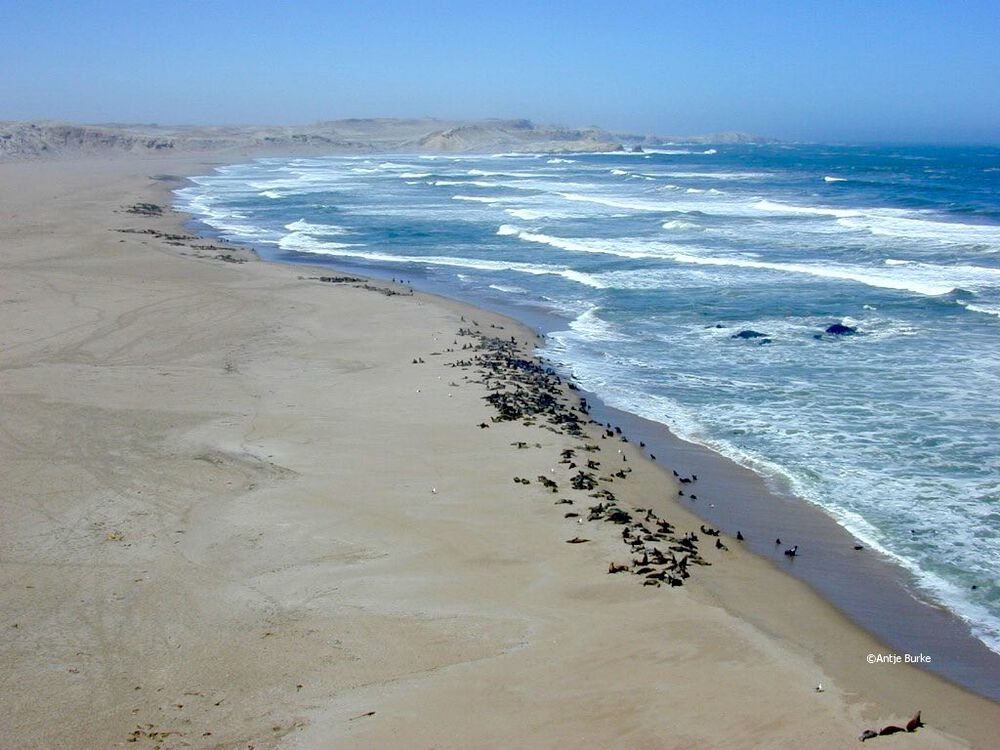
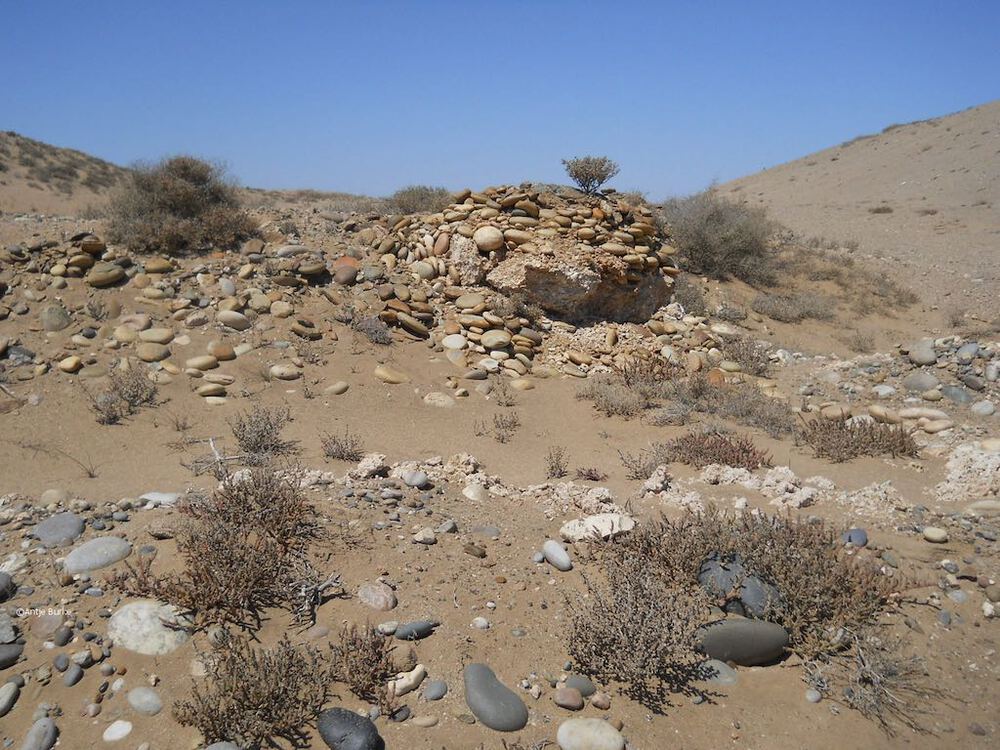
The plants are not the only biological attraction in the Sperrgebiet. A population of brown hyaena thrives in the area, and they can often be seen near the second-largest seal colony in Namibia. Desert specialists like springbok, gemsbok and ostrich live in this trackless wilderness, and a suite of smaller predators (for example jackals and Cape foxes) follow their prey. Flocks of shorebirds migrate up and down the coastline and to and from the offshore islands. Some of the birds reside at the Orange River Mouth, which is a Ramsar site (wetland of global importance).
We still know very little about the smaller wildlife, including insects, reptiles and amphibians, but scientists expect that at least the insect diversity will be similar to the plant diversity. As more scientists head to the Sperrgebiet, we can expect more amazing discoveries of unique fauna and flora.
Captivating history
The Sperrgebiet diamonds laid the foundation for Namibia’s development and the area is therefore host to some important historical sites. The mining ghost towns of Elizabeth Bay, Pomona and Bogenfels tell a story of the hardships, delights and daily toils of the early miners. Remains of living quarters, machinery, various means of transport, water supply infrastructure and many other items illustrate the working and living conditions of more than a century ago. History buffs will be well occupied by exploring these long abandoned settlements in the sand.
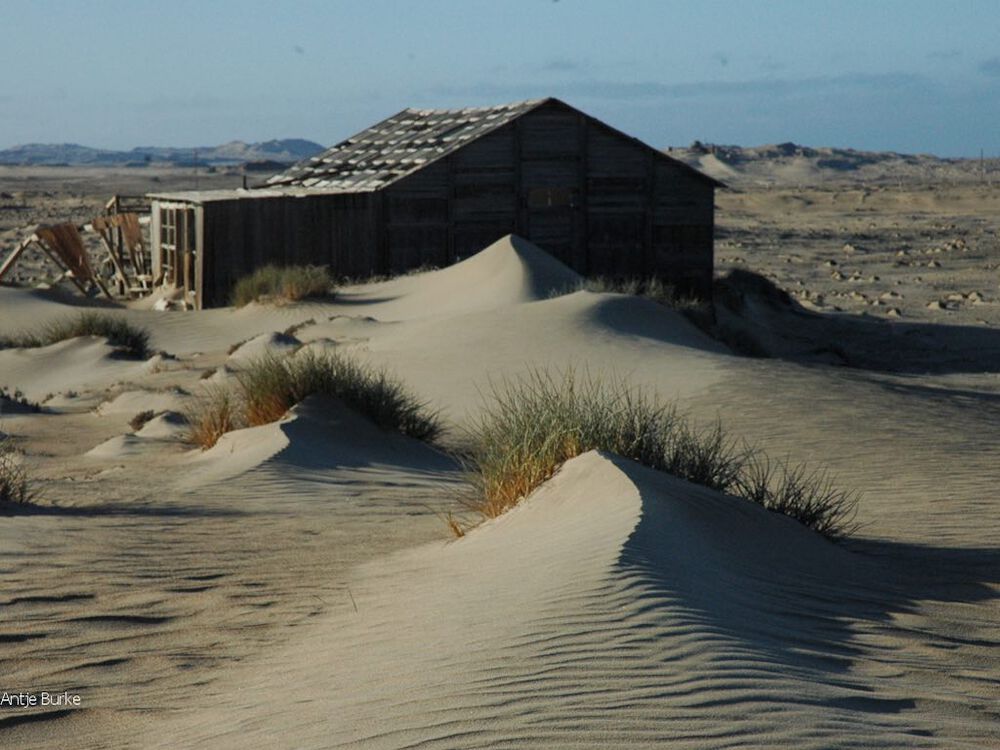

Let’s not forget one of the most significant historical finds of the area – the priceless 16th century Portuguese trading vessel Bom Jesus. Uncovered in 2008 during mining work on the ocean floor, this ship contained a treasure of gold, priceless nautical instruments, trading goods and other artefacts. This incredible find will keep archaeologists and historians busy for many years while they piece together its enthralling history.
Much still remains to be done to make visiting the Sperrgebiet a reality, but there is no doubt that it will attract many Namibians and international visitors to discover this natural treasure for themselves. The over 100-year wait has nearly ended! The current plan for tourism caters mainly for the high-end market, but personally I hope that provision will be made for ordinary Namibians to visit the Sperrgebiet on affordable guided tours.
Dr Antje Burke is an environmental scientist who has been advising the government and private sector on environmental matters in Namibia for over 30 years. Her current focus is on biodiversity, rehabilitation and mine closure planning. With a long list of research publications to her name, she is a widely respected biodiversity researcher in her field. The Namib Desert flora has fascinated Antje for a lifetime. Her field guide series on wild flowers of the Namib Desert, which includes those found in the Sperrgebiet, is a testimony to this. She has a great passion for the Sperrgebiet, particularly its flora.
For articles on similar topics, please click one of the following options:











